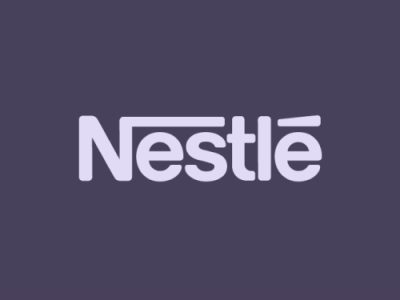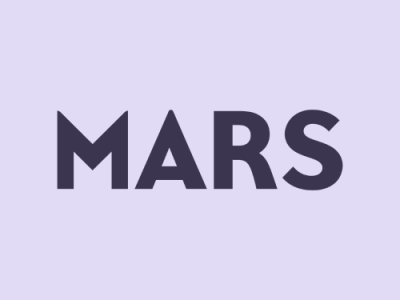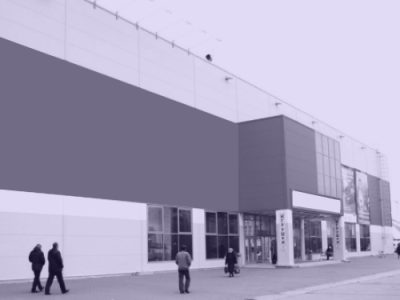Effective Strategies to Increase Sales in Your Retail Store
Our Clients
Committing to the success of our clients around the world
When the market is buzzing with promotions and discounts at every corner, it’s wiser to ask yourself not “where to cut the price”, but how to increase sales in your retail store through precise attention to customer needs. Shoppers want to quickly find what they need, understand the value, and feel cared for — and all of this can be achieved without a race to the bottom on margins.
The foundation consists of smart store layout, clear navigation, a well-thought-out offer, and personalized communications. Below are practical approaches that turn occasional visits into regular purchases and help systematically grow revenue.
Additionally, it’s worth implementing short testing cycles: one hypothesis — one metric — one conclusion per week. This is a sustainable way to grow systematically, without sudden moves or unnecessary losses.
Understanding Your Customers — the Foundation of Retail Growth
If you’re thinking about how to boost retail sales, start with understanding your customer profile: who your client is, what task they come with, and what prevents them from making a decision. Segment their motives — “save money,” “solve a problem quickly,” “compare and choose the best” — and have clear answers for each segment on the shelf and price tag.
It’s useful to literally ask out loud: “How can I increase sales in my store?” — and start by checking basic data hygiene. Compare visiting hours, average ticket, returns, and frequently asked questions to staff. Based on this, you can adjust the assortment and layout: highlight obvious bestsellers, set clear “anchor” prices, and enhance the visibility of alternatives.
Add simple analytical practices: RFM segments by purchase frequency and amount, client groups by first visit date, “persona” cards for key audiences. These tools don’t require complex systems but help quickly identify where conversion is lost and what value different types of buyers expect.

Optimizing Store Layout to Increase Purchases
Store layout is a quiet salesperson that works nonstop. Make the route natural: entrance — new arrivals — main categories — checkout. Provide a clear zone map and large signs at the entrance, and leave enough space in the aisles so carts don’t get “stuck.”
Place high-margin items at eye and hand level, and magnet products further along the path to collect impulse add-ons. Endcaps and checkout zones are hot spots, but don’t overload them: one message, one benefit, one set.
Quick layout adjustments (to do in one cycle):
-
Move 3–5 key SKUs to eye level and compare sales share before/after on a weekly basis.
-
Clear endcaps of secondary items and leave one “product + add-on” set.
-
Mark routes to “target products” with floor navigation and check how traffic changes in zones.
-
Keep only small, clear-value items at checkout — no more than 6–8 SKUs.
-
Rotate displays every 4–6 weeks to avoid “regular customer blindness” and boost impulse buying.
Monitor “display fatigue”: test category adjacencies and measure each zone’s contribution to conversion. Don’t confuse smart layout with pushy promotions — the goal of the store is to help decisions happen quickly and without extra questions.
Using Promotions and Discounts Without Harming Margins
A discount is just one way to stimulate demand, and it should be used sparingly. It’s better to focus on value: “buy together and save time” bundles, coupons for the next purchase, gifts for reaching a total, free setup, or fast replacement of consumables.
If you lower the price, calculate the promo’s contribution to gross profit, limit depth and duration, and work according to a clear hypothesis: unload slow SKUs, test new traffic, increase repeat visit frequency. The mechanics should be simple, conditions transparent, deadline realistic.
Supplement with a promo calendar without cannibalization: alternate categories, avoid simultaneous discounts on interchangeable items, and test demand elasticity on small samples before scaling.
Enhancing the In-Store Customer Experience for Repeat Visits
Repeat sales are built on details. Give the team practical tips on greeting, handling objections, and closing a sale without pressure. Benefit cards on shelves and short guides for complex categories create a sense of care and save time.
Reduce friction at checkout: contactless payment, fast returns, pre-packed bags, QR registration for loyalty programs. Include personal triggers — notifications like “product back in stock,” “running out soon,” “recommendation based on past purchase.”
Track basic experience metrics: average waiting time, share of completed purchases after consultation, NPS through short surveys. Conduct a “mystery shopper” quarterly and remove the top 3 barriers — this brings back customers faster than any large-scale advertising campaign.

Omnichannel Retail as a Path to Long-Term Growth
Shoppers compare online and finalize offline — and vice versa. To leverage this effectively, synchronize stock, prices, and promos across channels, and offer Click & Collect order pickup. Consultations in messengers and on the website should seamlessly guide customers to the shelf — a link to the exact aisle and photos help continue the journey.
Build effective content aligned with offline layout: where new arrivals are, how to reach checkout, which services are available “here and now.” Analyze peak periods and quiet hours: during peaks, increase staff and open extra checkout; in “slow times,” run workshops, tastings, local collaborations.
Create precise offers for each segment: starters — simple starter sets, bargain hunters — bundles and repeat-purchase coupons, loyal customers — previews and personalized recommendations. Add attribution: promo codes by channel, UTM for online sources, and “how did you hear about us?” surveys on receipts — so strategic decisions rely on data, not intuition.
Conclusion
The result is simple: stable growth doesn’t come from one big promotion, but from a chain of small decisions — clear assortment, clean navigation, proper value, and respectful service. When every step of the customer journey is transparent and fast, the store answers the key question “how to increase sales in a retail store” with action — growing conversion and healthy margins.
Contact us
Success Stories
 Allis
Allis
 Coca Cola
Coca Cola
 Perfetti Van Melle
Perfetti Van Melle
 Nestle
Nestle
 Danone
Danone
 Mars
Mars
 Tarweej
Tarweej
 TOP 3 Retail Chain
TOP 3 Retail Chain
 Global Retail Corporation
Global Retail Corporation
 World’s Leading Manufacturer
World’s Leading Manufacturer
 Global FMCG Brand
Global FMCG Brand
 Leading Food Manufacturer
Leading Food Manufacturer
 Global Food Manufacturer
Global Food Manufacturer
 Global Coffee Manufacturer
Global Coffee Manufacturer
 Major Spirits Producer
Major Spirits Producer
 Global Pharmaceutical Brand
Global Pharmaceutical Brand
 Leading Food Manufacturer
Leading Food Manufacturer
 Global FMCG Brand
Global FMCG Brand
 Leading Food Manufacturer
Leading Food Manufacturer
 Leading Spirits Producer
Leading Spirits Producer
 Major FMCG Brand
Major FMCG Brand
 Major Coffee & Tea Manufacturer
Major Coffee & Tea Manufacturer



















